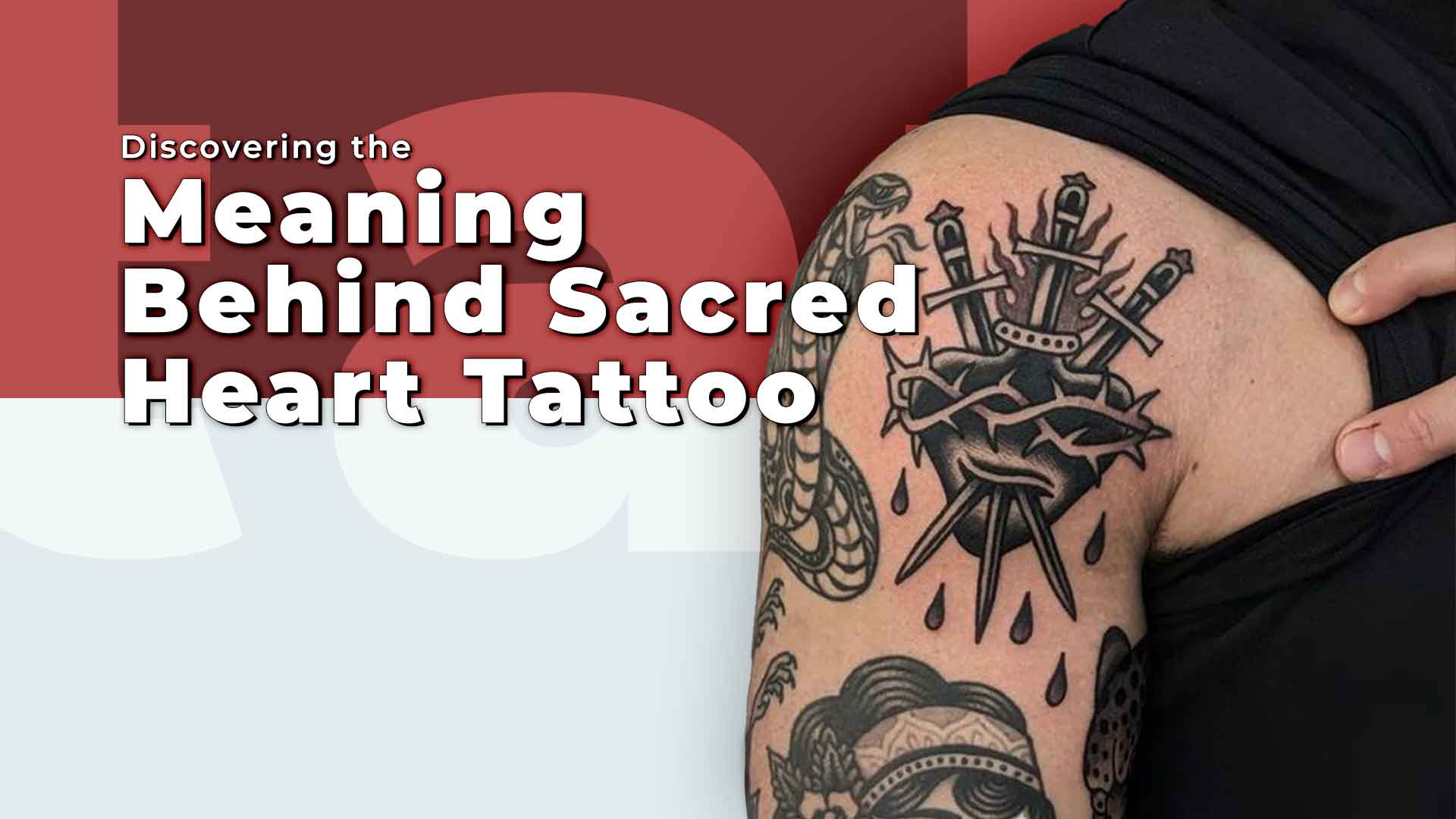A Sacred Heart tattoo expresses the powerful blend of love, sacrifice, compassion, and resilience associated with the heart of Jesus Christ. The design carries centuries of Christian devotion, yet it speaks beyond religion through its emotional depth and symbolic strength. Flames represent divine love, thorns reflect endurance, the wound recalls sacrifice, and the cross marks triumph through faith. These elements allow the Sacred Heart to become a personal emblem of healing, remembrance, gratitude, or inner transformation. People choose the tattoo to honor their beliefs, memorialize loved ones, or connect with themes of strength and devotion. Its rich history, clear symbolism, and artistic intensity make the Sacred Heart a meaningful and timeless tattoo motif.
Table of Contents
ToggleWhat Does a Sacred Heart Tattoo Mean?
A Sacred Heart tattoo expresses divine love, sacrifice, compassion, and resilience, drawing from the Christian devotion to the heart of Jesus Christ. The heart symbolizes unconditional love, the flames show purification, the wound recalls sacrifice, the thorns reflect suffering, and the cross marks triumph through devotion. Tattoo wearers choose it to honor faith, remember loved ones, or represent emotional endurance.
What Does the Sacred Heart Symbolize in Christianity?
The Sacred Heart symbolizes the emotional and divine life of Jesus, especially his love for humanity and his willingness to suffer for redemption. Christian devotion treats the heart as the center of mercy and compassion. Biblical passages such as John 19.34, Matthew 11.29, and Ephesians 3.17 to 19 highlight Christ’s humility, gentleness, and sacrificial love, which shaped the image used in churches and devotional art.
What Are the Key Symbols Within the Sacred Heart Design?
Sacred Heart imagery uses five elements that define its meaning in both religion and tattoo art.
-
Flames
The flames represent the fire of divine love that purifies the soul.
-
Crown of Thorns
The thorns signify Christ’s suffering and his endurance through pain for humanity.
-
Wound
The wound represents the spear injury Christ received during the crucifixion.
-
Blood
The blood symbolizes mercy and the sacrifice offered for salvation.
-
Cross
The cross represents triumph through suffering and the strength of sacrificial love.
How Do Sacred Heart Tattoos Connect to Jesus and Mary?
Sacred Heart tattoos connect to Jesus through thorns, wounds, blood, and the cross, while they connect to Mary through flowers such as lilies or white roses. A thorn-crowned heart reflects Jesus’s Passion. A floral-encircled heart reflects Mary’s purity and gentle compassion. Tattoo variations combine both themes to represent divine love and maternal tenderness in a single image.
What Is the History Behind the Sacred Heart?
The history began with early reflection on Christ’s humanity and developed into a widespread devotion across Christian Europe. Monastic writers in the 11th and 12th centuries meditated on the wound in Christ’s side as an entry into his heart. Saints such as Bernard of Clairvaux and Francis of Assisi shaped early devotion. The symbol gained clarity after the visions experienced by Margaret Mary Alacoque in the 17th century. She described the Sacred Heart surrounded by flames, crowned with thorns, and topped with a cross. Her accounts influenced churches, artworks, and devotional practices that continue today.
Why Do People Get a Sacred Heart Tattoo?
People get a Sacred Heart tattoo to express faith, honor loved ones, show emotional resilience, or appreciate the artistic power of religious imagery. The design suits believers who want a devotional symbol and non-religious individuals drawn to themes of endurance, love, or transformation. Its flames suggest rebirth. Its thorned heart shows perseverance. Its wound captures grief or remembrance. The symbol adapts easily to personal storytelling.
Can You Get a Sacred Heart Tattoo If You Are Not Religious?
Yes, anyone can get a Sacred Heart tattoo if the symbolism, aesthetic, or emotional meaning resonates with them. Non-religious wearers choose it for themes such as loyalty, healing, remembrance, or cultural identity. Respectful presentation maintains sensitivity toward its religious roots, while personal meaning remains central.
What Are the Most Common Sacred Heart Tattoo Variations?
Artists adjust Sacred Heart tattoos through elements that refine meaning and shape style.
-
Flaming Sacred Heart
A symbol of passion, purification, or inner transformation.
-
Sacred Heart With Roses or Lilies
A symbol of purity, compassion, and Marian devotion.
-
Sacred Heart With a Dagger
A symbol of sorrow, sacrifice, or memorial grief.
-
Sacred Heart With Radiant Light
A symbol of awakening, clarity, and renewed hope.
-
Minimal or Linework Sacred Heart
A symbol of simplicity, devotion, or quiet emotional strength.
How Does the Sacred Heart Function as a Memorial or Healing Tattoo?
The Sacred Heart functions as a memorial or healing tattoo by expressing love that remains after loss or suffering. Names, dates, or initials placed within the heart honor family members or partners. The wound reflects grief. The flames show continuing remembrance. The symbol becomes a gentle tribute that preserves emotional connection.
The Sacred Heart tattoo remains meaningful because it brings together divine love, human emotion, symbolic depth, and artistic power. Its flames, thorns, wound, blood, and cross offer a rich language of faith, strength, and transformation. Whether chosen for devotion or personal storytelling, the Sacred Heart continues to shape tattoos that express love, resilience, and spiritual identity.

